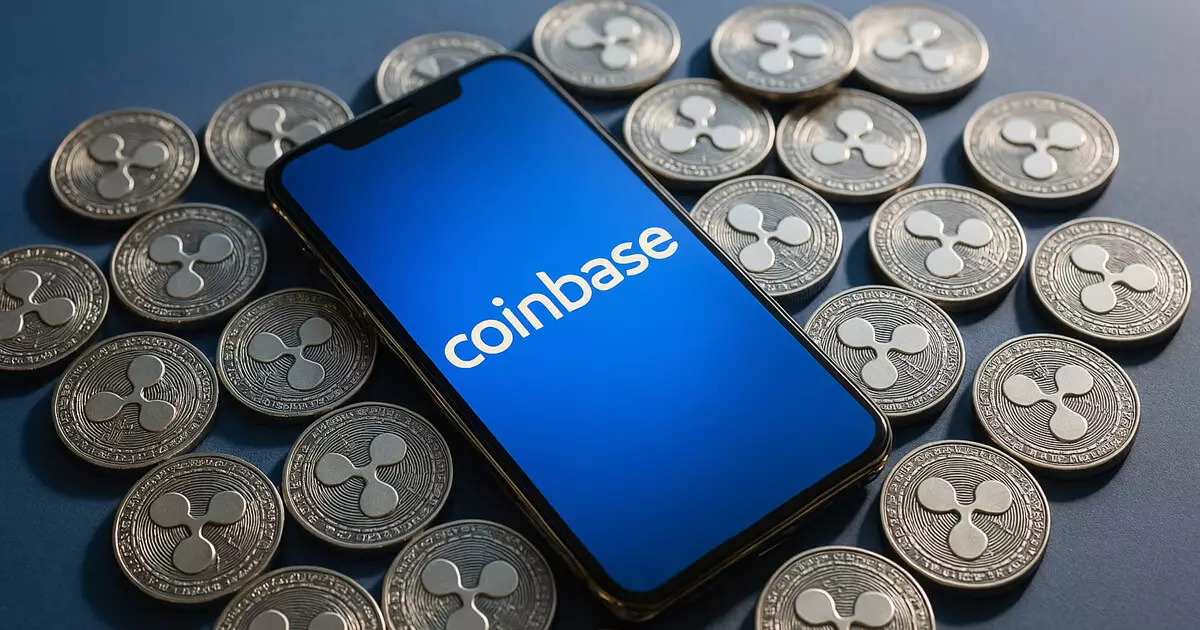Coinbase Derivatives is poised to make a game-changing move within the cryptocurrency arena with its recent filing to launch an XRP futures contract. This initiative, pending approval from the US Commodity Futures Trading Commission (CFTC), not only aims to enhance Coinbase’s product offerings but, more intriguingly, it could elevate the status of XRP in the eyes of both institutional and retail investors alike. The proposed launch date—April 21, 2025—might seem distant, but the implications could very well reshape the landscape of digital asset trading as we know it.
Self-Certification: A Double-Edged Sword
The self-certification mechanism for this futures contract represents a significant shift in how derivatives can be introduced to the market. While this streamlined approach to regulation offers a quick route for Coinbase to capitalize on XRP’s potential, it simultaneously raises questions about oversight and investor protection. A self-certified product can enhance efficiency but might also allow for dangerous speculative practices if not monitored closely. As we’ve witnessed in the past, the balance between innovation and investor safety is a precarious one. Without a strong regulatory framework, this daring move could backfire, potentially risking the very stability it aims to establish.
XRP’s Resilience Amid Market Volatility
Interestingly, XRP has shown remarkable resilience, emerging as the top-performing cryptocurrency within the top 10 in recent trading sessions, even as the overall market faces fluctuations. This trend suggests a growing optimism surrounding XRP, particularly tied to the anticipation of new financial instruments like futures contracts. Such optimism is contagious; when investors see a coin outperforming its peers, they’re more likely to jump on the bandwagon, which can create a self-fulfilling prophecy. However, the excitement must be tempered with caution; the crypto space is notorious for its volatility, often swayed by news and sentiment far beyond fundamental value.
The ETF Speculation: Timing is Everything
The backdrop to this XRP futures announcement is equally compelling; the growing speculation around a spot XRP exchange-traded fund (ETF) is dominating discussions in financial circles. Historical data indicates that both Bitcoin and Ethereum navigated a similar trajectory—futures contracts bolstered their prospects for ETF approvals, addressing regulatory concerns that arose along the way. Herein lies a paradox: while XRP’s futures might pave the way for a regulated spot ETF, the very existence of these products raises questions about market manipulation and price volatility—topics that have haunted cryptocurrency markets since their inception.
A Turning Point After Legal Storms
The recent legal settlement between Ripple and the SEC has dramatically shifted sentiment in the market, clearing a significant barrier for XRP’s legitimacy. CEO Brad Garlinghouse’s confirmation of the resolution has ignited optimism, with industry experts speculating that the path to an XRP ETF is no longer fraught with regulatory hurdles, but rather a question of timing. With interest from multiple asset managers—like 21Shares and Bitwise—now on the table, the impending futures contract could be the springboard needed for a broader acceptance of XRP under the regulatory microscope.
Navigating the volatile waters of cryptocurrency investment requires both insight and inquisition; Coinbase’s XRP futures could serve as a powerful catalyst for institutional involvement, but they also highlight the sharp need for vigilance and regulatory responsibility in an ever-evolving sector. As the mythos of cryptocurrencies grows, one must ask: will we harness the full potential of these innovations responsibly, or will we find ourselves repeating the mistakes of financial past?


Leave a Reply